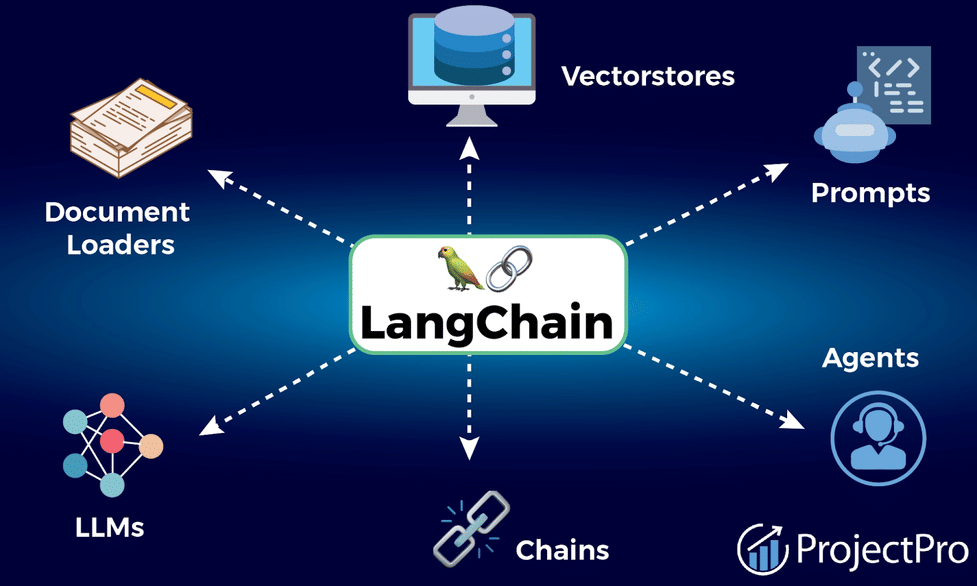Exploring the Technical Architecture Behind Video Chatbots

By 2025, video chatbots will have become a mainstream part of enterprise engagement. Unlike earlier bots that relied solely on text, today’s solutions combine voice, video, and contextual intelligence to simulate face-to-face conversations. An Interactive Video Chatbot can not only answer questions but also interpret emotions, demonstrate products, and adapt dynamically to user preferences.
Behind this smooth front-end lies a sophisticated architecture. Developers need frameworks that scale efficiently. Enterprises demand compliance and security. Users expect reliability and natural experiences. This layered technical design enables video chatbots to meet all three needs simultaneously.
Core Building Blocks of a Video Chatbot
A video chatbot integrates multiple AI layers that work in harmony. Each layer addresses a different modality—text, speech, vision, or personalization.
- Natural Language Understanding (NLU) Layer
At the core lies a natural language system that interprets text and speech.
- Transformer-based models: Fine-tuned large language models (LLMs) enable bots to understand context, intent, and sentiment. These models outperform older rule-based systems by handling ambiguity and adapting to industry-specific vocabulary.
- Multilingual handling: Global users often mix languages in the same sentence (e.g., “book doctor appointment kal ke liye”). Advanced NLU engines can parse such code-mixed queries, ensuring accuracy and inclusivity.
- Computer Vision Layer
Video chatbots rely on vision to read expressions and create realistic avatars.
- Emotion detection: Real-time recognition of facial expressions and micro-gestures allows the chatbot to adjust tone. If a user appears confused, the avatar can slow down and provide a more clear explanation.
- Lip-syncing and avatar realism: Deep learning models synchronize avatar mouth movements with generated speech. This eliminates the robotic mismatch between voice and expression that often breaks immersion.
- Audio-Video Processing Layer
Audio and video clarity are essential for trust.
- Noise suppression and echo cancellation: Built-in DSP filters eliminate background noise and prevent echo, ensuring conversations sound professional and easy to follow.
- Adaptive resolution: Since users access bots on various networks, the system adjusts video resolution in real-time. This prevents lags on low-bandwidth connections while maintaining quality on high-speed 5 G networks.
Backend Infrastructure and Orchestration
The backend ensures scalability, uptime, and smooth delivery.
Cloud-Native Microservices
- Containerization: Each component—NLU, vision, personalization, or storage—runs in independent containers. This modularity allows developers to scale a single function (e.g., vision) without affecting the rest.
- Kubernetes orchestration: Kubernetes automates deployment, load balancing, and failover. Enterprises can spread workloads across multiple clouds, reducing dependency on a single provider and ensuring resilience.
Real-Time Communication Protocols
- WebRTC: The backbone of low-latency video communication. WebRTC enables real-time peer-to-peer streaming, adaptive bitrate control, and secure transport—essential for natural conversations.
- QUIC protocol: QUIC reduces connection setup times and improves packet delivery compared to TCP. This means smoother video sessions, particularly on unstable mobile networks.
Data Storage and Retrieval
- Hybrid storage: Dialogue transcripts and metadata are stored in relational databases, while unstructured data, such as video snippets, resides in scalable object storage systems.
- Edge storage: Frequently accessed data is cached closer to end-users. For example, in retail deployments, regional servers may store product demo videos for faster access.
AI-Driven Personalization Layer
This is where bots transition from being efficient to being engaging.
Contextual Memory Systems
- Persistent state: Unlike traditional bots, video chatbots retain a memory of previous sessions. A customer asking about insurance today will not have to repeat details tomorrow.
- Vector databases: Past conversations are stored as semantic embeddings, enabling bots to recall intent-based context rather than relying only on keywords.
Adaptive Personality Engines
- Dynamic behaviour: Avatars can smile, nod, or soften their voice when users show frustration. This improves empathy and reduces drop-offs.
- Reinforcement learning: Over time, bots learn which styles of interaction yield better satisfaction or conversions. These improvements happen dynamically without manual scripting.
Multimodal Fusion Models
- Real-time alignment: Text, speech, and visuals must synchronize. Fusion models ensure that when the bot delivers a cheerful response, its tone and facial expressions match the content.
- Cross-modal attention: AI prioritizes the most relevant signal. For instance, if a user’s tone indicates anger, the chatbot adapts tone—even if the words sound neutral.
Security, Privacy, and Compliance Considerations
Trust is fundamental when handling video and audio.
Secure Data Transmission
- End-to-end encryption: All video, audio, and text data is encrypted during transit, protecting against interception.
- Zero-trust architecture: Each microservice validates requests independently. Even if one service is compromised, others remain protected.
Privacy-First Designs
- On-device inference: Tasks like facial recognition can run locally on the user’s device, reducing the need to send sensitive video data to central servers.
- Federated learning: Bots can improve by training on decentralized datasets without aggregating raw user data, preserving confidentiality.
Compliance & Governance
- Automated auditing: Every AI decision—such as detecting an emotion or suggesting a product—is logged for compliance checks.
- Regional frameworks: Systems adapt dynamically to GDPR in Europe, HIPAA in the US, and emerging 2025 AI regulations across Asia and the Middle East.
Future-Forward Trends in Video Chatbot Architectures (2025 and Beyond)
The next generation of architectures will be more immersive, adaptive, and efficient.
Edge + 5G Integration
With 5G and edge computing, inference can happen closer to the user. A hospital chatbot can analyze symptoms at the edge and return instant results, even when central servers are overloaded.
Generative Avatars
Diffusion and GAN models produce avatars indistinguishable from real humans. Businesses can create avatars aligned with brand identity or hyper-personalized for individual customers—down to style, accent, and clothing.
Autonomous Orchestrators
AI-driven orchestrators will manage infrastructure automatically. If a microservice fails, the system reroutes traffic. Compute and storage are optimized dynamically, reducing both downtime and costs.
Use Cases Across Industries
Video chatbots are not confined to one domain—they adapt to sector-specific needs.
- Retail: Bots act as digital shopping assistants, displaying products in 3D, comparing options side-by-side, and guiding checkout. This replicates the experience of interacting with a salesperson.
- Healthcare: Virtual consultation avatars guide patients through pre-checkups, collect symptoms, and provide aftercare reminders. This increases accessibility while easing the workload on doctors.
- Financial Services: Customers receive visual breakdowns of mortgages or insurance plans. Instead of reading dense documents, they interact with an avatar that clearly and visually explains the benefits.
- Education and Training: AI tutors combine visual lessons with real-time feedback. In corporate training, bots simulate customer scenarios to improve employee readiness.
- Travel and Hospitality: From virtual check-in to itinerary planning, video bots enhance convenience and streamline the experience. A guest can interact with an avatar that visually displays room features or provides directions.
Challenges and Considerations in Deployment
Adoption brings technical and operational hurdles that must be addressed early.
- Uncanny valley effect: Avatars that appear too lifelike can unsettle users. Businesses must balance realism with stylization to maintain comfort.
- Data privacy: Handling video introduces higher risks than text. Enterprises must invest in strong encryption, explicit consent flows, and localized processing.
- Accessibility gaps: Some customers prefer not to use video due to bandwidth or personal comfort. Providing text or voice options ensures inclusivity.
- Integration complexity: Video bots must tie seamlessly into CRMs, ticketing systems, and analytics dashboards. Without proper integration, customer journeys become fragmented.
- Operational management: AI models drift over time. Continuous monitoring, retraining, and governance are necessary to sustain performance and reliability.
Conclusion
By 2025, the technical architecture of video chatbots spans multiple layers: NLU, computer vision, audio-video processing, microservices, personalization, and security. Together, these components deliver experiences that feel human while remaining scalable and compliant.
For developers, this layered design provides a blueprint for innovation. For enterprises, it ensures that deployments scale securely and efficiently. For users, it results in an Interactive Video Chatbot experience that is natural, responsive, and trustworthy.
As architectures evolve, the line between human and AI-driven interaction will continue to blur. The future of customer engagement lies in multimodal systems that combine intelligence with empathy—delivering conversations that are not only digital but also truly human-like.





